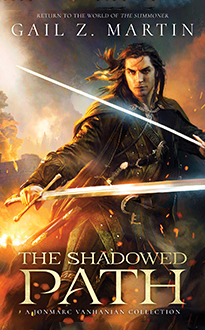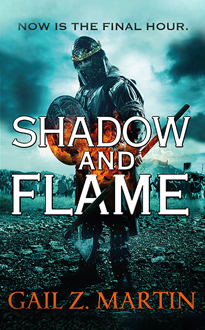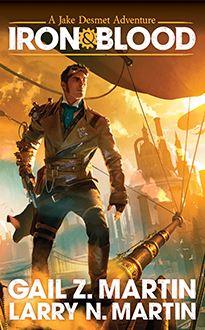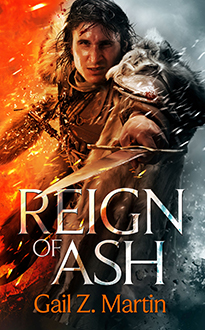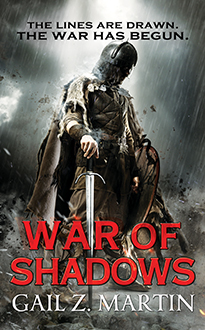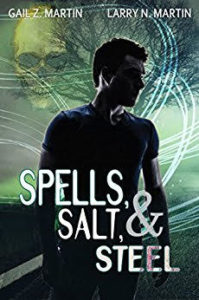by Gail Z. Martin
What’s it like making a jump from epic to urban fantasy (and beyond that, to steampunk)? Exciting, scary and fun–sort of like your favorite amusement park ride. And best of all for a writer, challenging.
I’ve written eight epic fantasies, big, thick 600 page adventures sprawling across kingdoms and continents, filled with necromancers and mages, monsters and magic, armies, battles, intrigue and scandal. The most recent is Reign of Ash, sequel to Ice Forged, in my Ascendant Kingdoms series from Orbit, and before that, my Chronicles of the Necromancer series from Solaris.
It’s so much fun to paint with words on the huge canvas that epic fantasy requires. Story arcs are big, enemies are ruthless on a large scale, problems have to be, well, epic in size. It’s an absolute blast to be the man behind the curtain, the wizard of your own Oz, pulling the levers and running the show. I have no desire to stop writing epic fantasy–and there are still several more books under contract.
But there were other stories that I really wanted to tell, and they demanded different settings. My Deadly Curiosities urban fantasy novel/series from Solaris is set in modern-day Charleston, SC. It grew out of a short story I wrote for their Magic: Esoteric and Arcane anthology, and a world I developed for stories I had done in many other anthologies. Deadly Curiosities is about a 350 year-old antique and curio shop that exists to get dangerous magical items off the market and out of the wrong hands. And it absolutely required a setting other than epic fantasy in order to do the stories justice.
Then there’s the steampunk novel, Iron and Blood, coming up in 2015 with Solaris and I’m co-authoring with my husband, Larry N. Martin. It’s grown out of a fascination with a particular city and it takes a supernatural twist on steampunk. It had to be a certain “when” and a certain “where.” The story wouldn’t settle for anything else.
One of the things that is so much fun about all this is that as an author, it’s a bit like having to shift between ballet, tango and hip-hop styles, or between three different style of martial arts, or speaking three different languages sequentially. It’s a hell of a mental exercise, creative jujitsu, and it’s an exciting challenge.
The epic fantasies and the steampunk are third-person narrative. The urban fantasy is first-person. The epics and steampunk have male protagonists and strong female secondary characters. The urban fantasy has a female protagonist/point-of-view character with some seriously kick-ass male secondary characters. In the epic series, the worlds were entirely of my own creation, so I didn’t have to reconcile anything with real historical facts. The urban fantasy is set in a real city, and while I take some liberties and fudge some details for the sake of artistic license, I still have to respect the bulk of Charleston’s history and its past and current geography in order to be true to the city as a setting. In the steampunk book, I’m doing an alternate history of the city, but I that means tweaking and twisting its history, not ignoring it all together. When it’s all said and done, it still has to feel authentic to the people who live there now.
Even magic changes its flavor as I dance between the genres. Epic fantasy magic is on as grand a scale as the rest of the story, with sorcerer-caliber power that can destroy armies or whole kingdoms. In my urban fantasy, the magic is more subtle, sneakier, a combination of curses, restless ghosts, emotional resonance, and stone tape as well as demons, demonic minion monsters, Voodoo priests, psychometry and more. In the steampunk books, magic takes a Victorian sensibility, dangerous but with decorum, a Marquis of Queensbury death dealing that tips its hat before trying to blow you into the hereafter.
At the end of the day, my goal is to make sure that readers have even more fun reading the books than I have writing them. I want to take you on a wild ride, show you some wonders, and skid full-speed into the conclusion so that you’ve got one thought: “Damn that was fun–let’s do it again!”


